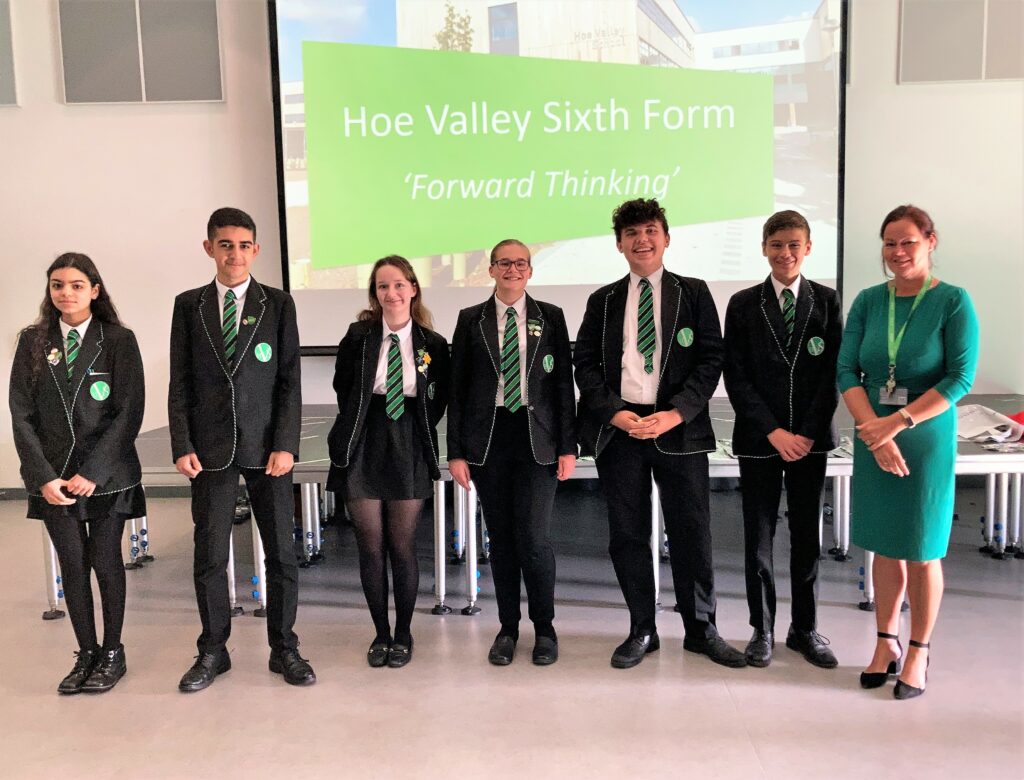
The curriculum is the engine room of our school and before we even opened our doors the starting point was to ensure that there would never be wasted learning time. To this end, we built our curriculum around our students’ prior learning and what they need to be able to know and do in order to thrive in the future. We considered questions such as:
What do our students study in year six? How can we build on this?
What knowledge do they need to gain and how can we ensure this is deeply ingrained and not superficial?
What skills do our students need to succeed as young adults in the working world and how can our curriculum prepare them for these challenges?
What links can we explicitly make across different subject specialisms to help students consolidate and apply new learning?
The design of the curriculum was influenced heavily by the paper: ‘KS3, the wasted years’ which inspired the team to create a year 7 curriculum which is challenging, rigorous and thematically based (The Wasted Years).
As a new school, we have the luxury of creating a curriculum from scratch carefully designing and adapting its content to make it suitable for each year group, looking in detail at one year at a time. Underpinning everything though, we believe that deep, accelerated learning takes place when our curriculum meets the following 4 aims:
It is engaging
The most effective learning is when students are curious, excited to know more and demonstrate a thirst for knowledge. Classrooms require energy and a ‘buzz’ as well as a clear focus on what the new learning is and what success looks like. Clear and consistent routines underpin exciting and creative classrooms.
Our learning extends far beyond the walls of the classroom, from pond dipping in Woking Park for biology to trips to museums, galleries and national newspapers, projects with global businesses and International trips.
As a Google School, all of our students access Google Classrooms for each of their subjects where they can use resources from lessons and work through independent extension activities. The Google suite of applications also enables students to work collaboratively with one another in a safe, monitored online environment.
It is relevant
All learning links to the ‘big question’ to clearly convey what the impact of this learning will be and how it will be useful in later life. The answer is never ‘we are learning this to pass an exam’! Instead we talk about the skills and knowledge required for different industries in 21st century life and the need for our students to be able to learn both independently and collaboratively in different contexts.
There is much in the media about the ‘UK skills gap’ and about the gap between the needs of employers and the skill set of school leavers and graduates. Through partnerships we have developed with leading local employers, we have developed the Work Ready strand to our curriculum.
This means learning at HVS enables our young people to not only have excellent academic outcomes but to confidently take up their place in the wider world. Links with universities, industry experts, different places of work and in-house ‘real world’ Work Ready skills through curriculum time. This ensures that by the time they leave the School they are well prepared for success in their chosen field.
Our projects include:
- Can we bring London to Woking? Students study the history, literature and architecture of London which culminates in a pop-up museum in partnership with the Lightbox
- Can we survive an earthquake? Students study ways to track, monitor and survive earthquakes in Geography, Computer Science and Design Technology before applying them to a real life scenario
- In a world dependent on mobile phones, can we take photographs without electronics? Students study the art and mechanics of photography in Art and Science before creating their own peephole cameras
It is challenging
This means different things to different learners – for some it is studying Latin as an additional subject, for others it is perfecting the building blocks of language. However, we never want our students to repeat learning they have already consolidated but instead are always building on these foundations. Every lesson has a red, amber and green pathway contained within it and our students may follow, for example, red in Science and green in Music depending on their confidence and strengths. This is evident in lessons which are grouped by ability (Maths and Science) and those which are taught in a mixed group.
By year 9 all students are on a bespoke pathway and are accessing a range of opportunities beyond the curriculum to stretch and challenge them. These include visiting the Guardian newsroom, STEM club, studying Latin, participating in the UK Maths Challenge, industry visits to employees such as Hewlett Packard and accessing opportunities via the National Association for Able Children in Education (NACE).
It is personalised
A personalised approach is crucial to ensure that students are able to access a curriculum and broaden their knowledge and skills. Our curriculum design and delivery is data driven and all lessons offer different pathways for different students. We have a dedicated Personalisation Faculty to ensure all students are accessing an appropriate and tailored curriculum which stretches our higher attainers and supports those who find a subject or topic challenging. Home learning is completed on site during prep, allowing support for students who require it alongside a calm, well-resourced study space for more independent learners.
Please visit our Policies and Procedures page to read our Curriculum Policy.